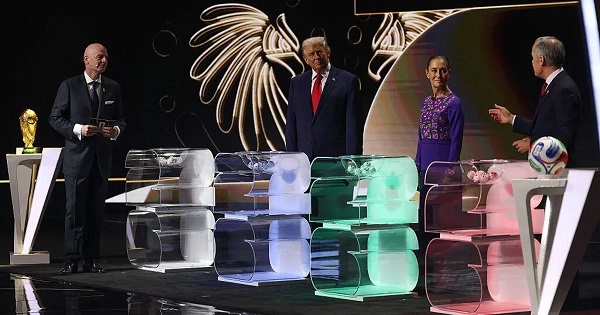Business
New programs to promote diversification in Alberta’s energy sector

Moving towards a more diversified energy sector
June 11, 2018 Media inquiries
New jobs and more private investment will be just some of the benefits of a more diversified energy sector, thanks to three new incentive programs created through the Energy Diversification Act.
The legislation, passed June 6, includes three new programs that provide a combination of royalty credits, grants and loan guarantees designed to encourage energy diversification, like petrochemicals and partial upgrading.
“Supporting energy diversification means supporting good jobs for working families and Albertans. We’re acting to ensure Alberta is competitive for major private investments and to build an economy to last. This is an exciting moment to push Alberta’s energy sector forward.”
Margaret McCuaig-Boyd, Minister of Energy
In total the $2-billion investment is available for private industry to apply for under:
Round 2 of the Petrochemicals Diversification Program
The Petrochemicals Feedstock Infrastructure Program
The Partial Upgrading Program
Industry can submit applications for the Partial Upgrading Program until Sept. 4, and can submit applications to the Petrochemicals Diversification Program and Petrochemicals Feedstock Infrastructure Program until Oct. 1. Evaluation will begin once the application seasons close. A decision on successful applicants is scheduled for late 2018.
The three programs are estimated to attract more than $10 billion in private investment, support roughly 8,000 construction jobs and create hundreds more operational jobs.
Petrochemicals
Petrochemicals are Alberta’s largest manufacturing industry, supporting roughly 7,600 skilled jobs and $8.2 billion in exports every year.
Round 2 of the Petrochemicals Diversification Program will build on the success of the first round and expand its scope. Applications will now be accepted that involve the use of ethane (used to manufacture products like plastic), as well as methane (used primarily as fuel, and to manufacture chemicals like ammonia) and propane (for heat and fuel). These are petrochemical feedstocks derived from natural gas. Applications to increase production at existing facilities will now also be allowed, after being excluded in the first round of the program.
The first round of this program in 2016 led directly to Inter Pipeline’s final investment decision on its $3.5-billion propane-to-polypropylene complex which is under construction in the Industrial Heartland near Fort Saskatchewan. At the peak of construction, an estimated 2,300 direct full-time jobs will be created and, once complete, the facilities will employ 180 people. A second proposed project from Canada Kuwait Petrochemical Corporation is undergoing front-end engineering design work for its project. A final investment decision is expected by early 2019.
Feedstock development
In order to ensure Alberta continues to have a strong supply of the building blocks needed for petrochemicals manufacturing, the Petrochemical Feedstock Infrastructure Program was created.
It will encourage industry to move forward on the facilities and infrastructure needed to capture more natural gas liquids required for value-added development.
These developments could include new natural gas processing facilities, smaller projects built closer to wellheads or straddle plants, facilities that are built along major natural gas pipelines that can extract certain components during transportation.
Partial Upgrading
Partial upgrading is a process that reduces the thickness of oil sands bitumen so it can flow through pipelines more easily, without having to be blended with diluent (a thinning agent such as naphtha). This process increases the volume of the bitumen product as well increasing its value.
Partial upgrading would enhance oil sands industry competitiveness by reducing industry costs, increasing pipeline capacity and enabling more refineries to process Alberta bitumen products. It would not limit future opportunities for full refining within Alberta.
The Partial Upgrading Program will support projects to develop this emerging technology in Alberta.
In May, industry was given an opportunity to review the draft application guidelines to ensure they were compatible with industry needs. More than 30 responses were received from companies across the three programs, foreshadowing a strong level of interest among investors.
Business
Storm clouds of uncertainty as BC courts deal another blow to industry and investment

From the Fraser Institute
By Tegan Hill and Jason Clemens
Recent court decision adds to growing uncertainty in B.C.
A recent decision by the B.C. Court of Appeal further clouds private property rights and undermines investment in the province. Specifically, the court determined British Columbia’s mineral claims system did not follow the province’s Declaration on the Rights of Indigenous Peoples Act (DRIPA), which incorporated the United Nations Declaration on the Rights of Indigenous Peoples (UNDRIP) into law.
DRIPA (2019) requires the B.C. provincial government to “take all measures necessary to ensure the laws of British Columbia are consistent with the Declaration,” meaning that all legislation in B.C. must conform to the principles outlined in the UNDRIP, which states that “Indigenous peoples have the right to the lands, territories and resources which they have traditionally owned, occupied or otherwise used or acquired.” The court’s ruling that the provincial government is not abiding by its own legislation (DRIPA) is the latest hit for the province in terms of ongoing uncertainty regarding property rights across the province, which will impose massive economic costs on all British Columbians until it’s resolved.
Consider the Cowichan First Nations legal case. The B.C. Supreme Court recently granted Aboriginal title to over 800 acres of land in Richmond valued at $2.5 billion, and where such aboriginal title is determined to exist, the court ruled that it is “prior and senior right” to other property interests. Put simply, the case puts private property at risk in BC.
The Eby government is appealing the case, yet it’s simultaneously negotiating bilateral agreements that similarly give First Nations priority rights over land swaths in B.C.
Consider Haida Gwaii, an archipelago on Canada’s west coast where around 5,000 people live—half of which are non-Haida. In April 2024, the Eby government granted Haida Aboriginal title over the land as part of a bilateral agreement. And while the agreement says private property must be honoured, private property rights are incompatible with communal Aboriginal title and it’s unclear how this conflict will be resolved.
Moreover, the Eby government attempted to pass legislation that effectively gives First Nations veto power over public land use in B.C. in 2024. While the legislation was rescinded after significant public backlash, the Eby’s government’s continued bilateral negotiations and proposed changes to other laws indicate it’s supportive of the general move towards Aboriginal title over significant parts of the province.
UNDRIP was adopted by the United Nations in 2007 and the B.C. Legislature adopted DRIPA in 2019. DRIPA requires that the government must secure “free, prior and informed consent” before approving projects on claimed land. Premier Eby is directly tied to DRIPA since he was the attorney general and actually drafted the interpretation memo.
The recent case centres around mineral exploration. Two First Nations groups—the Gitxaala Nation and the Ehattesaht First Nation—claimed the duty to consult was not adequately met and that granting mineral claims in their land “harms their cultural, spiritual, economic, and governance rights over their traditional territories,” which is inconsistent with DRIPA.
According to a 2024 survey of mining executives, more uncertainty is the last thing B.C. needs. Indeed, 76 per cent of respondents for B.C. said uncertainty around protected land and disputed land claims deters investment compared to only 29 per cent and 44 per cent (respectively) for Saskatchewan.
This series of developments have and will continue to fuel uncertainty in B.C. Who would move to or invest in B.C. when their private property, business, and investment is potentially at risk?
It’s no wonder British Columbians are leaving the province in droves. According to the B.C. Business Council, nearly 70,000 residents left B.C. for other parts of Canada last year. Similarly, business investment (inflation-adjusted) fell by nearly 5 per cent last year, exports and housing starts were down, and living standards in the province (as measured by per-person GDP) contracted in both 2023 and 2024.
B.C.’s recent developments will only worsen uncertainty in the province, deterring investment and leading to stagnant or even declining living standards for British Columbians. The Eby government should do its part to reaffirm private property rights, rather than continue fuelling uncertainty.
Business
Conservative MP warns Liberals’ national AI plan could increase gov’t surveillance

From LifeSiteNews
Conservative MP Leslyn Lewis raised concerns about the Liberals’ major investment in AI, which could lead to digital ids and loss of freedoms.
Conservative MP Leslyn Lewis is sounding the alarm over the Liberals’ nearly billion-dollar AI infrastructure investment, which could lead to digital IDs
In a December 2 post on X, Lewis raised concerns over the Liberals’ 2025 budget, which funds a $925.6 million “Sovereign Canadian Cloud” and national AI compute infrastructure at the same time as the Liberals are pushing digital identification on Canadians.
“Who audits the algorithms behind government’s new digital systems?” Lewis challenged. “What protections exist for Canadians in this new infrastructure? Who builds it? Who controls it? Who owns the data?”
“Good technology isn’t the issue, our freedoms, surveillance and good accountable governance in a digital era are the real issues,” she warned.
“Digital infrastructure is power, and it must never be implemented in secrecy or without parliamentary scrutiny,” Lewis declared.
Despite spending nearly one billion taxpayer dollars on the project, Prime Minister Mark Carney provides surprisingly few details on how the infrastructure will work and what its purpose will be.
“Budget 2025 proposes to provide $925.6 million over five years, starting in 2025-26, to support a large-scale sovereign public AI infrastructure that will boost AI compute availability and support access to sovereign AI compute capacity for public and private research,” the budget read.
“The investment will ensure Canada has the capacity needed to be globally competitive in a secure and sovereign environment,” it continued.
Alarmingly, the funding comes at the same time as Liberals are moving forward with digital identification systems, despite warnings that they will infringe on Canadians freedoms.
In November, as reported by LifeSiteNews, Liberals moved ahead with digital identification for anyone seeking federal benefits, including seniors on Old Age Security.
Additionally, the Canadian government hired outside consultants tasked with looking into whether or not officials should proceed with creating a digital ID system for all citizens and residents.
Per a May 20 Digital Credentials Issue memo, and as noted by Blacklock’s Reporter, the “adoption” of such a digital ID system may be difficult.
Canada’s Privy Council research from 2023 noted that there is strong public resistance to the use of digital IDs to access government services.
Nonetheless, Conservative leader Pierre Poilievre sounded the alarm by promising to introduce a bill that would “expressly prohibit” digital IDs in Canada.
Critics have warned that the purpose of such IDs is actually to centralize control over citizens. This opinion seems to be mirrored by the general public, with a Bank of Canada survey finding that Canadians are wary of a government-backed digital currency, concluding that a “significant number” of citizens would resist the implementation of such a system.
Digital IDs and similar systems have long been pushed by globalist groups like the World Economic Forum, an organization with which Carney has extensive ties, under the guise of ease of access and security.
-

 COVID-192 days ago
COVID-192 days agoUniversity of Colorado will pay $10 million to staff, students for trying to force them to take COVID shots
-

 Bruce Dowbiggin2 days ago
Bruce Dowbiggin2 days agoIntegration Or Indignation: Whose Strategy Worked Best Against Trump?
-

 espionage2 days ago
espionage2 days agoWestern Campuses Help Build China’s Digital Dragnet With U.S. Tax Funds, Study Warns
-

 Bruce Dowbiggin2 days ago
Bruce Dowbiggin2 days agoWayne Gretzky’s Terrible, Awful Week.. And Soccer/ Football.
-

 Agriculture2 days ago
Agriculture2 days agoCanada’s air quality among the best in the world
-

 Business1 day ago
Business1 day agoCanada invests $34 million in Chinese drones now considered to be ‘high security risks’
-

 Great Reset1 day ago
Great Reset1 day agoSurgery Denied. Death Approved.
-

 Health2 days ago
Health2 days agoCDC Vaccine Panel Votes to End Universal Hep B Vaccine for Newborns








